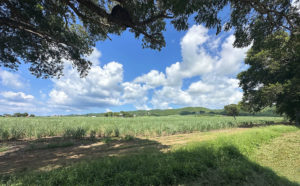Sugar, also known as table sugar or sucrose, holds a significant historical importance as one of the world’s oldest commodities. Its origins trace back to around 8,000 BC when indigenous people in New Guinea first domesticated it by chewing cane as a sweet delicacy. Over time, the cultivation and trade of sugar expanded through sea routes to China and India.
Historical records suggest that crystallized sugar was utilized even before the time of Christ, albeit through labor-intensive processes. Roman physicians in the first century used sugar to treat stomach ailments. As the demand for sugar increased, more efficient processing techniques emerged, with the common practice of crushing cane to extract juice remaining prevalent to this day. For further insights, refer to the Mills page.
The Caribbean’s sugar production commenced with the introduction of sugarcane during Columbus’ second voyage in 1493. Sugar production began in the Spanish colony of Santo Domingo in 1506 and in the British colony of Barbados in 1627. While there are mentions of British sugar production on St. Croix in 1621, it was the French who established sugarcane production at La Grange and La Grande Princesse. By the time Denmark acquired St. Croix in 1733, sugarcane production in the Caribbean was firmly established, marking the era when “Sugar is King.”
In Europe, developments unfolded that would significantly impact the Caribbean sugarcane industry. In 1747, German chemist Andreas Marggraf patented a process for extracting sugar from beets. Subsequently, his apprentice Franz Karl Achard began breeding sugar beets selectively, leading to the opening of the first sugar beet factory in 1801 in present-day Poland.
The Napoleonic Wars (1803-1815) saw the implementation of the “Continental System” and naval blockades, disrupting the sugar cane trade. Napoleon, in search of alternative sugar sources, turned to the “Society for the Encouragement of National Industry” to develop methods for extracting sugar from alternative sources. Marggraf’s earlier patent resurfaced, marking a turning point in history. While sugarcane has not been commercially grown on St. Croix since the 1960s, there are indications of a potential revival in the future.
Today
Robert Apfel, a serial banking and securities entrepreneur from Brooklyn, established “Raising Cane” with the goal of revitalizing the viability of sugar cane. This initiative took place on the land of Estate Prosperity in the west end. For further information, you can refer to a St. Croix Source article and a document from vihistorians.net. Regrettably, unfounded biases within the community have thwarted the agricultural aspirations on St. Croix, as highlighted in another St. Croix Source article.
The sugar content of liquids such as cane juice is measured in Brix, named after Adolph Brix, and is indicated as a percentage. Initially, the sugar content of the first factory beets was 6% Brix, but modern beets can contain up to 20% Brix. Present-day sugarcane typically falls within the range of 15% Brix to 23% Brix. As a result, it is more economically advantageous to cultivate temperate climate sugar beet, which is now grown as far north as North Dakota, for sugar production in Europe and North America rather than in tropical or subtropical regions. In the United States, sugarcane is predominantly cultivated in Florida, Louisiana, Texas, and Hawaii. Interestingly, France and Britain are no longer significant consumers of sugar.
More about Sugar
Sugar Addiction in the USA:
Sugar is the USA’s number one addiction. We consume it in our foods and beverages from several different forms – Glucose, Fructose (fruit sugar), Sucrose (table sugar), Lactose (milk).
The World Health Organization recommends limiting sugar consumption to 25 grams per day, but the US per capita consumption is over 126 grams per day. Global sugar consumption was around 176 million metric tons in 2022/23 and is projected to increase to about 180.05 million metric tons by 2023/2024 (Statista).
Sucrose Production Process:
Sucrose, derived from sugar cane, is a disaccharide composed of two monosaccharide units joined by a glycosidic bond. It is the main constituent of white sugar. An enzyme called sucrose synthase breaks down sucrose into fructose and glucose (invert sugars). Sucrose is produced by photosynthesis in the leaf and transported into the stem. A fungus at the joint feeds on leaked sucrose, using sucrose synthase for its consumption.
The cane was striped and washer prior to crushing to extract juice, but still, some of the fungus remains and it is crucial to stop the enzyme from converting sucrose to the invert sugars that inhibit crystallization. The first “pan” in the sugar factory, made of copper for thermal conduction, quickly heats the juice to destroy the enzyme. In the iron “clarifier” pan, juice is mixed with limewater to neutralize pH, and impurities are coagulated with bulls blood or egg whites, and ladled out before continuing to crystallization.
Detail of the sugarcane plant. https://edis.ifas.ufl.edu/publication/SC034
.
